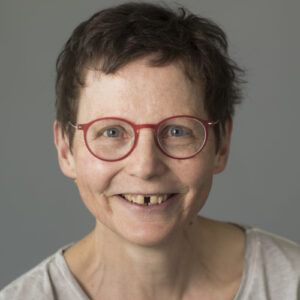– “Fra til til en” – eiendomsoverbyggende samarbeid for private, personlige skogeiere i kystskogbruket

The Norwegian forest ownership has a fragmented structure. There are ca. 116 300 personal owned forest properties of 2,5 haa productive forest area and more, and the average forest property is 45 hectares. The counties included in the coastal forest area (Rogaland, Hordaland, Sogn and Fjordane, Møre and Romsdal, Sør-Trøndelag, Nord-Trøndelag, Nordland, Troms and Finnmark) have roughly the same number of forest properties as the remaining inland counties, but the average property size in coastal forestry, is smaller and strip forestry is more common. There are great variations in the level of forestry competence among the forest owners, and the level of professional knowledge is partly low. The demands to the forestry sector will not be reduced in the future and the forest owners' cost of acquiring and maintaining a satisfactory level of competence will increase. According to Norwegian forest policy the forestry sector shall contribute to the climate, the preservation of biodiversity, creation of economic values and maintaining living communities in the rural areas. And the sector is going to do that at the same time as the public forest service has been reduced, and very little has been done to adjust the structure of the forest properties. The present structure with a number of small properties becomes a basic premise for future actions. This project on multi property cooperation for all types of personal forest owners in the coastal area, is approaching all the above mentioned problems. The cooperation could be a moderate restructuring of the forest properties which can be implemented on a relatively short notice. By activating the many forest owners, the complex political objectives can be reached. The project findings will provide practical and political insights on how to utilize in various ways, the great forest resources, the increment and increasing area in the coastal counties. The results will also be relevant for other parts of Norway. Goals: The project will try various models of multi property cooperation, give an adequate description of conditions (understandings, processes and effects) promoting and being obstacles to cooperation, evaluate costs and benefits, and derive practical solutions and implications to the forest policy. As subgoals the project will answer the following questions: 1. What makes it attractive for the forest owners to join multi property cooperation and participate in the implementation? How do the participating forest owners understand and judge the processes and activities which follow in the multi property cooperation? What are for them the benefits and the costs of this cooperation? How, and to what degree do the participants experience that their role as decision makers are ensured? How do they experience the content of the supervision provided and how do they judge how this is adapted to themselves and their own improving competence? How do they respond to overall objectives in the society such as climate, biodiversity, value creation and the rural society? Are there gender differences in these questions? 2. How do the participant project actors, both public and private, understand and judge the benefits and the costs of the cooperation? Seen in relation to the forest owners? Seen to each ones unit or position? Are the benefits and the costs in conflict with the benefits of the forest owners? Do the various participant project actors have contradicting benefits and costs? How do they understand and judge the cooperation between themselves? 3. How do the answers in sub goal 1 and 2 vary, depending on the type of multi property cooperation and the regional challenges (forestry, social and cultural factors)? 4. What are the required working conditions and practical preparations for making multi property cooperation sustainable? Is there a need for public economic support to forest owners? How should this economic support possibly be organized? Can the use of the forest trust fund be changed and utilized? Which non-monetary, political conditions will be required or fruitful to modify or to establish? Field projects: Four field projects (multi property cooperation) are to be implemented in the counties of the Coastal Forestry Projects area. The field projects shall be adjusted to regional challenges (forestry, social and cultural). Not all, but at least one of the multi property cooperative projects must be of the joint forestry type. All the field projects shall include elements of extension work. The aim is to increase the level of competence for the forest owner. To motivate the forest owners to participate in the multi property cooperation, there will be employed arguments such as the importance of forests for the climate, the care of biodiversity, value aggregation and/or the maintenance of active rural societies (business development, identity, pride). The four field projects are subjected to trailing research. (In English research terms the wording "formative dialogue research" is commonly used for this type of research.) The project includes inter alia a mapping of the key figures for the main natural resources at the places the field projects take place, a study on the public and private project actors that organize and implement the four field projects, a study devoted to the participating forest owners in the field projects, and a superstructure for all field projects.
Project details
Project number
6235.00
Project period
01/01/2009 - 31/12/2014
Collaboration partners
The Norwegian Forest and Landscape Institute
Financing
The Agricultural Agreement, The Research Council of Norway, and the forestry industry in the counties participating in The Coastal Forestry Project
Publications
- Article
2021
Contact us
Would you like to get in touch with us?
Fill in the form below and we will answer you as soon as possible.
